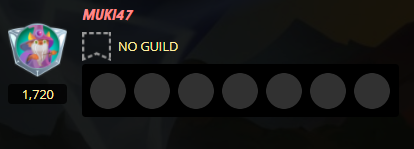Positioning - Beginners Guide
Positioning is the order in which you place your monsters on the field. Bad positioning leads to unused potential, non-symbiotic play, unnecessary losses and ultimately to a loss. Positioning depends greatly on the type of strategy a person uses, and usually the goal is to maximize Damage Per Turn (DPT) and Survivability.
Each monster, depending on their stats, can fill a certian role. Generally we can classify these roles in:
- Tank
- Support
- Backline Harassment
- meant to attack enemy support and other backline monsters
- it is smart to have them harass one monster at a time, instead of spreading the damage out
- have abillities that let them engage without being in the first spot : Opportunity , Sneak and Snipe
- Frontline Harassment
- meant as extra damage on the enemy tank
- usually monsters that do magic or ranged damage, without specific target ability (e.g. Sneak)
- melee monsters that have the ability Reach and decent HP find a lot of use
- Backline Cover
- meant to soak up damage in the backlines, but generally a very poorly defined category
- anything that takes the hit meant for any of the other backline roles
- very hard to define, as they can be low HP meant to take Opportunity shots or high HP meant to stay on the last spot and soak up Sneak damage
I tried to include and hyperlink most of the monster abilities you will be facing in the beginners bracket. As you climb the ranks you will be met with newer abilities that influence positioning. This game has 50+ monster abilities and it would take too much time for me to explain all of them, and you will not be seeing the until much later in your gameplay.

Some general Scheme of positioning would look like:
- Tank
- Tank/Frontline Harassment
- Frontline Harassment/Backline Harassment/Support
- Frontline Harassment/Backline Harassment/Support
- Frontline Harassment/Backline Harassment/Support
- Backline Cover/Frontline Harassment/Backline Harassment/Support
Now at a first glance this is quite confusing but we can deduce a few things from here:
- Tanks go first, and soak up the damage
- and can be followed by a line of secondary tanks (usually in higher mana battles)
- Support is usually tucked away in the middle, where it is the safest
- we want to have our support live the longest so we get the benefits from it
- it looks like slot 3-6 are interchangable but that depends on a lot of factors and usually boils down to the strategy you are using
- Some monsters can fill more roles
- generally the monsters that can fill more roles, at an effective mana cost have a higher price
- they are more versatile and less forgiving of mistakes
- that makes them a big target for the enemy
It would be quite hard for as a beginner you to apply these things in the game, I decided to explain 5 usual team compositions on that you will meet, made purely of starter cards. Try them out and see how they work for you, but I do implore you to research your own and use Practice Mode to do so.
↓↓↓↓↓↓↓↓↓↓
If you read the Doc you will see that there are different strategies, and they evolve as the game becomes more complex with newer cards. For beginners it is important to understand whats happening on the field and how they can use that to their advantage. Do not keep reusing one strategy, your enemy can see what you played the last 5 games and can easily counter you. Some players are more skilful or lucky than others and can modify their team to win better. The big takeaway I want you to have is how the positioning influences the game .

Congratulations @muki47! You have completed the following achievement on the Hive blockchain and have been rewarded with new badge(s) :
Your next target is to reach 100 upvotes.
You can view your badges on your board and compare yourself to others in the Ranking
If you no longer want to receive notifications, reply to this comment with the word
STOPCheck out the last post from @hivebuzz:
Support the HiveBuzz project. Vote for our proposal!